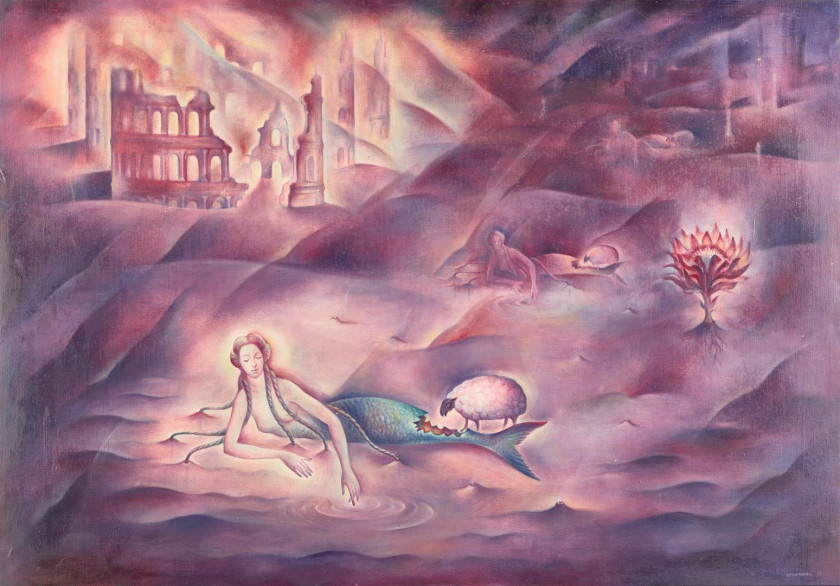O Festim [The Feast]
painting


1972
Oil on canvas
70 x 100,5 cm
The extremely versatile work of Emília Nadal crosses references from Pop with an oneiric lyricism, critically commenting her epoch with the ambition of a broader perspective of time. In Portugal, the agonising dictatorship of the État Nouveau perpetuated a colonial war, refusing to recognize the inevitability of a new historic configuration, and this situation was felt by Nadal as dramatic, faced with the impossibility to contain the foreseeable destruction.
Some works of the 1970’s reflect the artist’s disquiet and help us approach O Festim (The Feast) oil. The mermaid motif had already been present in a series of five pastels from 1971, titled Da Nova História da Sereia (From the New Story of the Mermaid), in which her body shows a progressive decomposition with clear allegoric suggestions. From a trip to Tunisia, in that same year, Nadal seems to have taken the inspiration for desert landscapes, the architecture of the Roman Empire and flocks of sheep, all of which she will represent in the 1972 work, O Encontro (The Meeting). The passage of time over civilisations, in the continuous of a historic reformulation, is emphasised by the presence of animals, in the dichotomy between nature and culture. This theme acquires a new formulation in the pastels from 1972, Arqueologias do Futuro (Archaeologies of the Future), although here this reflection presents itself as an oracular projection of a time to come: a New York in ruins, inhabited by pre-historic animals.
O Festim, The Feast, seems to be a continuation of the same year’s work, O Crepúsculo (Twilight), where in a similarly oneiric landscape, a vampire is already too close to the mermaid and a flock of sheep, apparently innocent, comes close to the pair. In O Festim (The Feast) the menace has become reality: The sheep devour the mermaid’s body, in a representation that unfolds as a diagonal echo, from the first to the last plane. The architectural ruins, dramatically lit, compensate for the representation of the mermaid and her echoes, caught to the surface by the hair, but impassive to her own destruction.
Luísa Cardoso